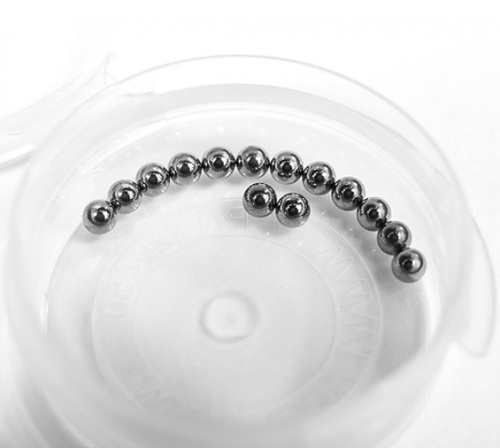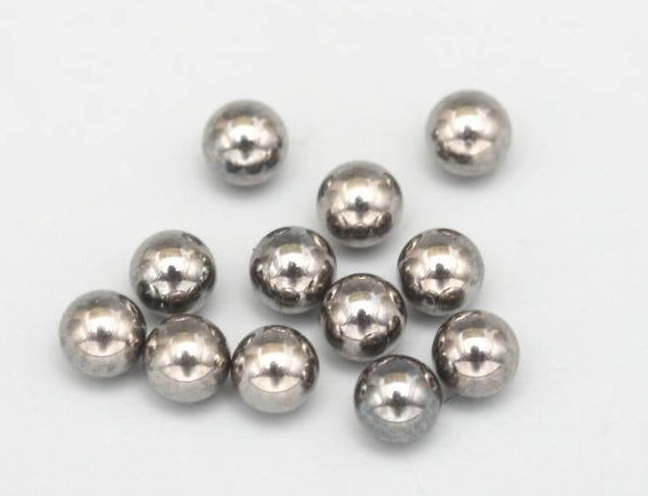Content Menu
● Overview of Tungsten Carbide
● Applications of 3/32 Tungsten Carbide Balls
>> 1. Ball Bearings
>> 2. Valves and Pumps
>> 3. Aerospace Components
>> 4. Medical Devices
>> 5. Industrial Machinery
● Benefits of Using Tungsten Carbide Balls
>> Durability
>> High Performance
>> Corrosion Resistance
>> Versatility
● Conclusion
● Related Questions
>> 1. What are the typical costs associated with using 3/32 tungsten carbide balls?
>> 2. How do the manufacturing processes for 3/32 tungsten carbide balls vary?
>> 3. What are the environmental considerations for tungsten carbide ball production?
>> 4. Can tungsten carbide balls be recycled?
>> 5. What industries are seeing increased use of tungsten carbide balls?
Tungsten carbide balls, particularly those measuring 3/32 inches in diameter, are renowned for their exceptional hardness, durability, and resistance to wear. These properties make them ideal for a variety of applications across multiple industries. In this article, we will explore the various applications of 3/32 tungsten carbide balls, their benefits, and the reasons behind their widespread use.

Overview of Tungsten Carbide
Tungsten carbide is a composite material made from tungsten and carbon atoms. It is known for its high density and hardness, making it one of the hardest materials available. This hardness allows tungsten carbide to withstand extreme conditions, including high temperatures and pressures, which is why it is often used in applications that require high performance and durability.
Applications of 3/32 Tungsten Carbide Balls
1. Ball Bearings
One of the most common applications for 3/32 tungsten carbide balls is in ball bearings. These small, spherical components are crucial in reducing friction between moving parts in machinery. The hardness of tungsten carbide allows these balls to maintain their shape and performance over time, even under heavy loads. This makes them ideal for use in high-speed machinery, automotive applications, and aerospace components.
2. Valves and Pumps
Tungsten carbide balls are also used in valves and pumps, particularly in applications where high pressure and corrosive environments are present. The wear resistance of tungsten carbide ensures that these components can operate effectively without degrading over time. This is particularly important in industries such as oil and gas, where equipment is subjected to harsh conditions.
3. Aerospace Components
In the aerospace industry, the lightweight and durable nature of tungsten carbide balls makes them suitable for various applications, including in engines and landing gear systems. The ability to withstand high temperatures and pressures is critical in aerospace applications, and tungsten carbide balls excel in these environments.
4. Medical Devices
Tungsten carbide balls are increasingly being used in medical devices, particularly in surgical instruments and implants. Their biocompatibility and resistance to wear make them ideal for use in environments where hygiene and durability are paramount. For example, they can be found in orthopedic implants, where they provide strength and longevity.
5. Industrial Machinery
In industrial settings, 3/32 tungsten carbide balls are used in a variety of machinery, including grinding mills and mixers. Their hardness allows them to effectively break down materials without wearing out quickly, which is essential for maintaining efficiency in production processes.

Benefits of Using Tungsten Carbide Balls
Durability
One of the primary benefits of using tungsten carbide balls is their durability. They can withstand significant wear and tear, making them a cost-effective choice for many applications. This durability translates to longer service life and reduced maintenance costs.
High Performance
Tungsten carbide balls offer high performance in demanding environments. Their ability to maintain shape and integrity under pressure ensures that machinery operates smoothly and efficiently. This is particularly important in industries where precision is critical.
Corrosion Resistance
Tungsten carbide is inherently resistant to corrosion, which is a significant advantage in applications involving exposure to harsh chemicals or environments. This property extends the lifespan of components and reduces the risk of failure.
Versatility
The versatility of tungsten carbide balls allows them to be used in a wide range of applications across different industries. Whether in manufacturing, aerospace, or medical devices, their unique properties make them suitable for various uses.
Conclusion
In summary, 3/32 tungsten carbide balls are essential components in many industries due to their hardness, durability, and resistance to wear and corrosion. Their applications range from ball bearings and valves to aerospace components and medical devices. As technology advances, the use of tungsten carbide balls is likely to expand further, solidifying their place as a critical material in high-performance applications.

Related Questions
1. What are the typical costs associated with using 3/32 tungsten carbide balls?
The cost of 3/32 tungsten carbide balls can vary based on factors such as quantity, supplier, and specific application requirements. Generally, they are more expensive than steel balls due to the material's properties and manufacturing processes. However, their durability often justifies the initial investment.
2. How do the manufacturing processes for 3/32 tungsten carbide balls vary?
Manufacturing processes for tungsten carbide balls typically involve powder metallurgy, where tungsten and carbon powders are mixed, pressed into shape, and then sintered at high temperatures. Variations in this process can include different sintering techniques or the addition of other materials to enhance specific properties.
3. What are the environmental considerations for tungsten carbide ball production?
The production of tungsten carbide balls involves mining and processing tungsten, which can have environmental impacts. Sustainable practices, such as recycling tungsten and reducing waste during manufacturing, are increasingly being adopted to mitigate these effects.
4. Can tungsten carbide balls be recycled?
Yes, tungsten carbide balls can be recycled. The recycling process involves grinding the used balls into a powder, which can then be reused to create new tungsten carbide products. This not only conserves resources but also reduces environmental impact.
5. What industries are seeing increased use of tungsten carbide balls?
Industries such as aerospace, automotive, oil and gas, and medical devices are increasingly utilizing tungsten carbide balls due to their superior properties. As technology advances, new applications are continually being explored, expanding the market for these durable components.
















